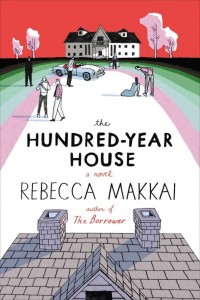By Reilly McKnerneySPECIAL TO THE CHRONICLE
“The Hundred-Year House” by Rebecca Makkai is a novel broken down into three parts, making it unique just for the way it is written and set up. Part I takes place in 1999, Part II takes place in 1955 and Part III takes place in 1929, all narrated by different characters who are mentioned throughout the story.
The story travels through time, going backwards in order to explain the past given in the previous section. The book successfully hooks the reader because the chapters are always quite short – often only one to two pages. This is a great way to keep the reader focused and free of boredom.
The novel begins with the characters Zee Devohr and her husband Doug Herriot moving into the coach house on her mother Grace and stepfather Bruce’s estate in Toronto. Not long after they settle in, Zee’s stepbrother Case and his wife Miriam move into the coach house as well, which aggravates Zee and causes problems within both marriages.
From here the story switches narratives between Zee and Doug, but mainly focuses on Doug’s desire to find out more about the poet Edwin Parfitt. Parfitt happened to stay in the estate when it was transformed into the Laurelfield Arts Colony back in the 1920s to 1950s.
This leads to snooping and secrecy from Doug with the help of Miriam and an old friend. The novel continues to search for the secrets that live within the house, exposing many things that are quite unexpected to the characters and the reader.
While the novel was intriguing during the fast-paced snooping and exposure of the truth behind the lies, it was often dry and inactive. The focus of the novel seems to be separated between discovering the secrets within the old estate and the relationship struggles between the characters.
After working past the less enjoyable parts of the novel, Makkai truly is able to tell a story with many layers. The story was able to captivate the reader with the character narrative by Zee and Doug in Part I of the novel.
The audience is able to see how Zee feels during the difficulties of her marriage and her work life. The ability to see into Doug’s secretive actions is also immensely exciting because he is lying about so many aspects of his life.
Overall, the novel had its positive and negative aspects. I would recommend this book to anyone who is intrigued by poets, writers or artists, and enjoys the idea of a heist.


